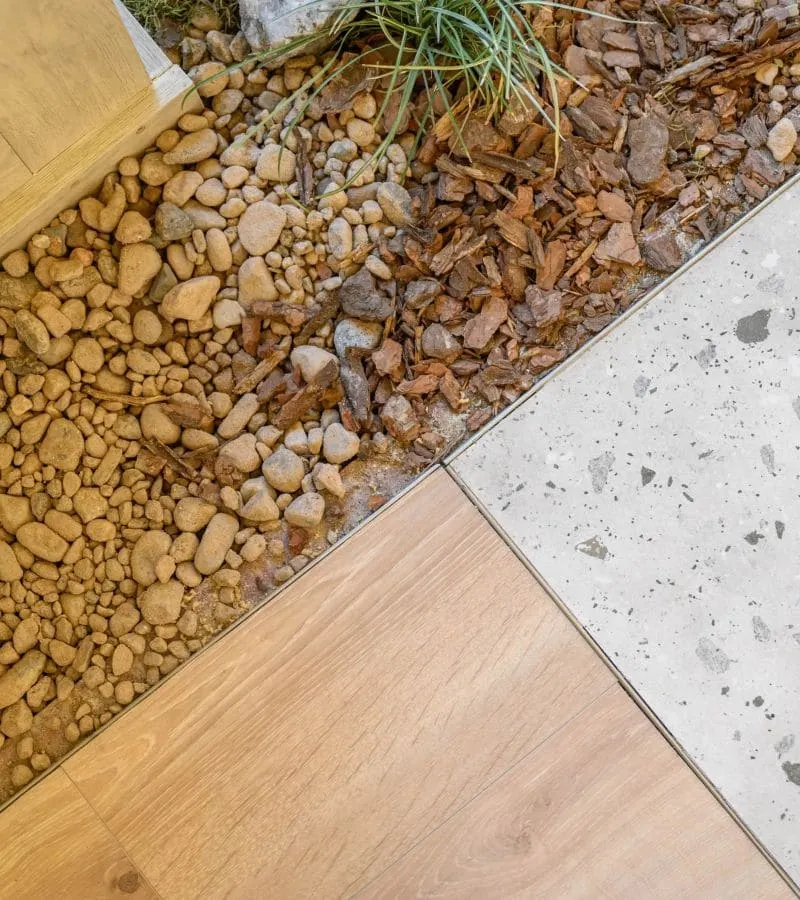-
Online products available in the U.S. market
- Registration / Log in
Online products available in the U.S. market
Stainless steel profiles are a durable, hygienic, and visually appealing solution for kitchens, bathrooms, exteriors, and commercial or industrial spaces. Typically made from AISI 304 or AISI 316 stainless steel, they offer excellent corrosion resistance—especially when properly maintained. Regular cleaning with neutral soap, water, and soft cloths helps preserve their finish, while avoiding harsh chemicals, abrasive tools, and mixing cleaners is key to preventing damage. For limescale or grease, diluted vinegar or specialized stainless steel products are recommended. During construction, it's essential to protect profiles with masking tape or film to avoid scratches, stains, or corrosion. Compared to materials like aluminum, PVC, or brass, stainless steel stands out for its longevity and chemical stability. For more care tips and technical specifications, visit ATRIM's Campus.

Stainless steel profiles are an aesthetic, functional, and durable choice for all types of projects. At ATRIM, we recommend them not only for their strength and elegance but also because they adapt seamlessly to different architectural languages and usage conditions.
However, like any material exposed to daily use, their performance and appearance depend on proper care. That’s why in this article, we share the best cleaning and maintenance practices, common mistakes to avoid, tips based on environmental conditions, and key actions that make a long-term difference.
Stainless steel profiles used in architecture and design are commonly manufactured in AISI 304 stainless steel, an alloy containing approximately 18% chromium and 8% nickel. This composition makes it highly resistant to oxidation and corrosion in indoor or semi-covered environments.
For outdoor applications in harsh conditions, coastal zones, or industrial environments, AISI 316 stainless steel is recommended. This grade includes molybdenum to enhance resistance to chlorides and aggressive agents.
High corrosion resistance thanks to its protective passive layer.
Superior durability against UV rays, humidity, and temperature changes.
Long-lasting visual appeal when properly maintained.
Chemically inert—ideal for areas with food handling or cleaning products.
The most common finish for profiles is the satin (brushed) polish, which offers a refined, non-glossy look that better hides minor scratches and fingerprints.
1. Routine or periodic cleaning
Use a microfiber cloth with warm water.
Dry immediately to prevent water spots.
Always wipe in the direction of the grain.
Suggested frequency: weekly or as needed.
2. Stubborn stains or grease
Mix: 1 liter of warm water + 3 drops of neutral detergent.
Apply with a soft (non-metallic) sponge.
Rinse with clean water.
Dry with a soft cloth.
3. Limescale or hard water stains
Mix: 1 part white vinegar + 3 parts water.
Apply with a cloth, let sit for 5–10 minutes.
Rinse thoroughly and dry.
Tip: If your water is hard, use distilled water for the final rinse.
4. Restoring shine
Use stainless steel-specific polishes.
Apply with a cotton cloth, following the manufacturer’s instructions.
In outdoor or coastal areas, repeat every 3 months.
Product Type | Use | Precaution |
|---|---|---|
Neutral cleaners | General cleaning | No chlorine, no ammonia |
Stainless steel cleaners | Professional maintenance | Check compatibility |
Stainless steel polishes | Restore shine | Apply with soft cloth |
Diluted white vinegar | Remove limescale | Never use undiluted |
Using products with chlorine → Chemically attacks the passive layer, causing pitting.
Scrubbing with abrasive pads → Scratches the surface and traps dirt.
Not drying after cleaning → Leads to water spots or limescale.
Mixing different cleaning products → Can cause unpredictable chemical reactions and staining.
Using undiluted vinegar or not rinsing → May leave marks or acid residue.
One of the most vulnerable times for profiles is during construction. Even if properly installed, they can suffer:
Scratches from tools.
Stains from adhesives, paint, or construction dust.
Prolonged exposure to moisture, salt, or improper cleaning.
Recommendations:
Cover profiles with protective film or wide masking tape immediately after installation.
Avoid contact with mortar, adhesives, or silicone until fully cured.
Clean immediately if contaminated with aggressive substances.
Perform a final cleaning with warm water and neutral detergent at the end of the project.
Residential kitchens: Combine hygiene with modern aesthetics.
Bathrooms: Ideal for areas with constant steam and moisture.
Retail stores: Withstand frequent cleaning and heavy foot traffic.
Façades and exteriors: When using AISI 316, they remain flawless even in harsh environments.
Hospitals and laboratories: Chemically inert and easy to sterilize.
Environment | Suggested Frequency | Recommendations |
|---|---|---|
Kitchen | Weekly | Watch for grease and humidity |
Bathroom | Every 4–5 days | Prevent steam and limescale buildup |
Urban exterior | Bi-weekly | Consider acid rain, dust, and smog |
Coastal area | Weekly | Deep cleaning with distilled water |
Industrial settings | As per local standards | Use polishes and monitor chloride levels |
Material | Advantages | Disadvantages |
|---|---|---|
Anodized aluminum | Lightweight, good aesthetics | Less scratch-resistant |
PVC | Affordable, easy to clean | Less durable, heat-sensitive |
Brass | Warm aesthetic, ages well | Can oxidize if untreated |
Painted steel | Low initial cost | Scratches easily, paint can peel |
Stainless steel | High resistance, neutral aesthetic, durable | Higher cost |
Can I use regular multi-purpose cleaners?
Not recommended. Most contain harsh chemicals like chlorine or ammonia.
What if the profile is already stained?
Try a deep clean with diluted vinegar or use specialized polishes.
Can stainless steel profiles rust?
Yes, if the protective layer is compromised or they’re exposed to chlorides without proper maintenance.
How can I tell if my profile is AISI 304 or 316?
Check with the manufacturer or supplier. At ATRIM, we always specify the stainless steel grade in our technical datasheets.
Want to learn more?
Visit the ATRIM Campus to access our guides, videos, and exclusive tips for professionals.
